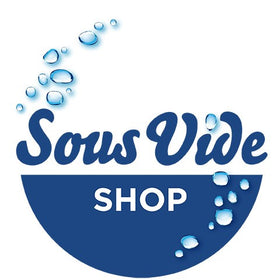Cooking at low temperature – for how long?
Part 1
When cooking sous vide at low temperatures we are trying to achieve two very important things. The first is to produce stunningly tender food of exceptional quality and the second is to make food safe. No chef would ever desire to make their customers sick.
How do we then determine the length of time that will give us the correct result when we use low temperature to cook food. The best tool on the market is the Polyscience ‘SousVide Toolbox’ this app is available for both the iPad and iPhone and built in to the Breville|Polyscience HydroPro Plus. The thermo dynamics of food are fairly consistent, so mapping out the heating curve of food items as they come to temperature can be mathematically determined using a few basic parameters. The PolyScience SousVide Toolbox works all of this maths out for us. You enter in the basic information, what is to be cooked, what shape or cut is it, how thick is it, the temperature you have set the water bath to. It then suggests known cooking temperatures for doneness off your food item. When you have entered the correct information in to the ‘SousVide Toolbox’ it not only shows you the time it will take to cook, it displays a chart showing heating and cooking times as well as decimal reduction of known pathogens and works as a countdown timer.
Reduction of known pathogens (E.coli, Listeria, Salmonella) is worked out using what is referred to as decimal reduction. The formula for this is simple if you have a Phd in applied mathamatics, for the rest of us Douglas Baldwin has done all of the maths and set it out in charts in has essay “A practical guide to sous vide cooking” you can follow his charts or you can allow the Toolbox to work all of that out for you.
Guessing food safety is a dangerous practice!!
Get the sous vide toolbox and cook with confidence.
How long should I sous vide it
Part 2
In part two we look at how shape and thickness affect cooking times.
If it takes one hour and six minutes to cook a steak twenty millimetres thick at 58?C how long will it take to cook to 58?C if it is 40 millimetres thick? Most of us would assume that this would take twice as long, wouldn’t we? In actual fact it takes over three times as long.
Slab, cylinder, sphere which will cook faster? The transfer of heat through an object is directly relational to the distance that the heat needs to travel from every point to the centre of the object. This means that a sphere which is equidistant to the centre from all points has the most efficient heating to the core properties. The other factor that we need to consider is that the closer the core temperature of an item is to the external temperature applied to the item the less effective the heat transfer to the core becomes. In practice this means that the last two degree Celsius at the core can take up to 40% of the cooking time, for items that require a specific core temperature to be achieved.
With this in mind it beckons the question what would happen if we set the sous vide immersion circulator 2?C higher than the core temperature desired. If we take the example of the steak at 40 millimetres thick it would take 3:37:32 to reach a core temperature of 58?C, if we increase the bath temperature to 60?C it would take 1:46:20 to reach a core temperature of 58?C. That sounds great all except one minor point, at the higher temperature our steak is at 58?C at the core but at 59.6?C on the surface. We also need to remove our steak at the time it is ready so as not to overcook it, keep in mind that 2?C in cooking a steak is the difference between medium rare and medium.
The only way to monitor exact core temperature of sous vide items is to use hypodermic thermocouple probes. When used correctly a hypodermic probe thermometer gives you the power to control exact core temperature and exact doneness of your sous vide foods. Closed cell tape is fixed to the outside of the vacuum pouch using the self-adhesive strip on the tape. The hypodermic probe is then pushed through the tape to the core of the food item, the tape reduces the chance of the vacuum in the pouch being lost. The food is then placed in to controlled temperature water using you PolyScience – sous vide professional – chef series immersion circulator. Set the thermocouple to “auto cut out off” and the high warning alarm to the desired core temperature, so that the temperature at the foods core will trigger an alarm when core temperature is reached.


